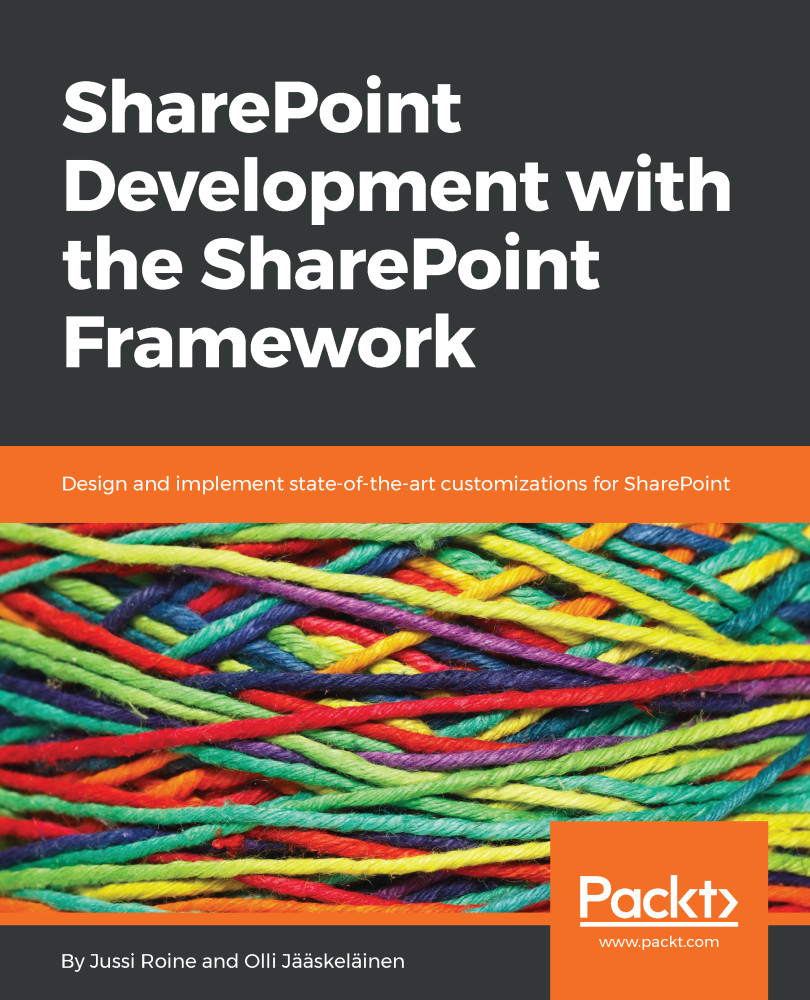Now that we're getting more familiar with SharePoint Framework and Visual Studio Code, it's time to start deploying our code more properly to SharePoint. The difference between running your code against a local SharePoint Workbench, a hosted SharePoint Workbench and deploying it to SharePoint is important to understand. For this, we need to learn to package our customization into a neat package and install the packages through SharePoint's App Catalog service. In addition, SharePoint Framework supports the use of Content Delivery Networks (CDN) that greatly optimize the client-side behavior for your users, so we'll take a look at how to configure CDN properly either through SharePoint Online or Microsoft Azure. You could use an on-premises SharePoint also, but typically this is either not needed or is handled in another device...
-
Book Overview & Buying

-
Table Of Contents

SharePoint Development with the SharePoint Framework
By :

SharePoint Development with the SharePoint Framework
By:
Overview of this book
SharePoint is one of Microsoft's best known web platforms. A loyal audience of developers, IT Pros and power users use it to build line of business solutions.
The SharePoint Framework (SPFx) is a great new option for developing SharePoint solutions. Many developers are creating full-trust based solutions or add-in solutions, while also figuring out where and how SPFx fits in the big picture.
This book shows you how design, build, deploy and manage SPFx based solutions for SharePoint Online and SharePoint 2016.
The book starts by getting you familiar with the basic capabilities of SPFx. After that, we will walk through the tool-chain on how to best create production-ready solutions that can be easily deployed manually or fully automated throughout your target Office 365 tenants.
We describe how to configure and use Visual Studio Code, the de facto development environment for SPFx-based solutions. Next, we provide guidance and a solid approach to packaging and deploying your code.
We also present a straightforward approach to troubleshooting and debugging your code an environment where business applications run on the client side instead of the server side.
Table of Contents (14 chapters)
Preface
 Free Chapter
Free Chapter
Introducing SharePoint Online for Developers
Developing Solutions for SharePoint
Getting Started with the SharePoint Framework
Building Your First Web Part
Using Visual Studio Code and Other Editors
Packaging and Deploying Solutions
Working with SharePoint Content
Working with the Web Part Property Pane
Using React and Office UI Fabric React Components
Working with Other JavaScript Frameworks
Troubleshooting and Debugging SharePoint Framework Solutions
SharePoint APIs and Microsoft Graph

